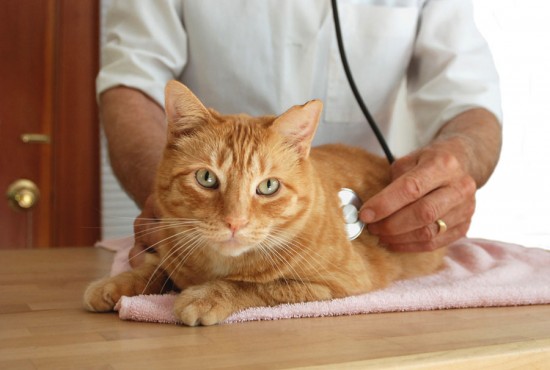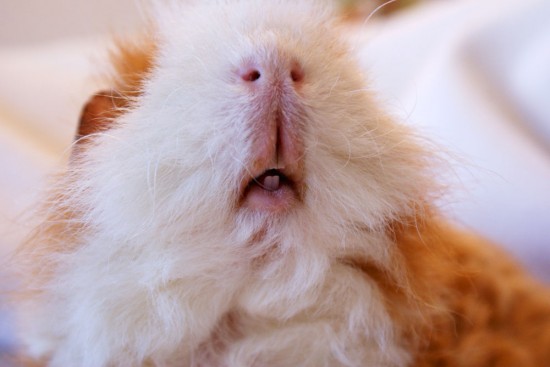

FeLV is part of the same group of viruses as Feline Immunodeficiency Virus (FIV), which attacks the white blood cells leaving the cat's immune system open to other diseases and secondary infections. It is slightly less common than FIV, probably because there is now a vaccine against it, although no vaccine ever guarantees 100% immunity from infection, and it is estimated that around 2% of the UK cat population are carrying FeLV. However, not all cats coming into contact with FeLV are permanently affected and a few who have only limited exposure may expel it within 4-12 weeks after initial positive exposure, although once it reaches the bone marrow, the cat will remain affected for ever.
The virus is transmitted through contact with the saliva of a permanently affected cat over a prolonged period of time, as FeLV does not survive for long outside of the host environment. It is very likely to be passed on in a multi-cat household through mutual grooming, shared feeding bowls and play fighting, or contact with the urine or faeces of an infected cat. The risk of infection through attendance at a cat show is said to be minimal. It is also possible for a FeLV-positive female cat to pass on the virus to her kittens through her milk, although the majority of infected pregnant cats will lose or reabsorb any unborn kittens. It is possible for a single cat to develop FeLV if its mother was already a carrier when the kitten was born, and it can take months or even years before the disease shows itself. However, although FeLV is highly contagious, it is a feline-related disease, and humans and other family pets will not be in danger of contracting it.
The clinical symptoms of FeLV tend to be rather non-specific, and can include a high temperature, anaemia, loss of appetite and weight loss, as well as respiratory, skin and intestinal problems. Cats that become permanently affected often contract serious illnesses including cancer, the most common being lymphoma which often leads to solid tumours in the internal organs, eyes or nasal passages, or even to leukaemia, which is caused by tumours in the bloodstream. FeLV can only be diagnosed by means of blood tests carried out by a Vet who will probably test for FIV (Feline Immunodeficiency Virus) at the same time, as some of the visible symptoms can be very similar.
It is a difficult disease to manage if you have other cats because it is highly infectious and almost always terminal, but if a positive result is given, then all other cats in the house should be tested immediately. All affected cats should be kept apart from all non-affected cats, including eating, sleeping, litter trays and general socialising. As a responsible pet owner, it is also advisable to keep any affected cats indoors so that they do not pass on the disease to other local cats. It is important to treat all secondary infections with antibiotics as directed by the Vet, and re-testing after about 12 weeks will be recommended as there is a very small possibility that the test may have been wrong or that the cat is not persistently affected. Two consecutive tests showing the same result can generally be taken as an accurate indication of cat's FeLV status.
Unfortunately, the life expectancy of a cat diagnosed with FeLV is usually less than three and a half years, as there is no treatment for it, but whilst an affected cat still has quality of life and secondary infections can be controlled, there is no reason at all why they should not live a reasonably normal life so long as they can be kept apart from all non-affected cats, and you are scrupulous with your cleaning routines. It should be noted that FeLV-positive cats should not be fed raw meat because of the increased risk of Toxoplasma gondii, which the suppressed immune system will not be able to cope with, and which could lead to fits. The time will eventually come when you have to make that heart-wrenching decision to say goodbye to your pet, as they will never make a full recovery and the immune system will eventually be unable to cope with any secondary infection.
If you are a breeder, it is important to test all your breeding stock on a regular basis as a matter of routine so that you can manage the early onset on FeLV, should it appear in your household. If you are taking a breeding female cat to stud, the stud owner will ask to see a very recent FeLV-negative test certificate, usually taken within the 24 hours immediately before you go to stud. There are several types of FeLV vaccines available, which your Vet will advise you about, and if your cat goes out at all, it is strongly recommended that you have him vaccinated as part of the annual booster. But whether or not you are a breeder, if your cat has already contracted FeLV, then vaccination is no longer an option. Cats that live indoors are very unlikely to become infected by FeLV, assuming they have not already been in contact with the disease before they came to live with you. If you are introducing a cat or kitten from an unknown background, or if you adopt a stray, it would be a wise precaution to have a FeLV test done before introducing it to any other cats in your household.
 Provide Your Horse With Equine Supplements To Keep Him Healthy And Happy
Provide Your Horse With Equine Supplements To Keep Him Hea
Provide Your Horse With Equine Supplements To Keep Him Healthy And Happy
Provide Your Horse With Equine Supplements To Keep Him Hea
 Mixed Breed Vs. Purebred - Which Is Best?
Mixed Breed Vs. P
Mixed Breed Vs. Purebred - Which Is Best?
Mixed Breed Vs. P
 Guinea Pig Teeth And Dental Problems
Guinea Pig Teeth
Guinea Pig Teeth And Dental Problems
Guinea Pig Teeth
 10 Very Talkative Dog Breeds
10 Very Talkative
10 Very Talkative Dog Breeds
10 Very Talkative
 Additional Dog Care Factors To Bear In Mind If You Live In A Flat
Additional Dog Ca
Additional Dog Care Factors To Bear In Mind If You Live In A Flat
Additional Dog Ca
Copyright © 2005-2016 Pet Information All Rights Reserved
Contact us: www162date@outlook.com